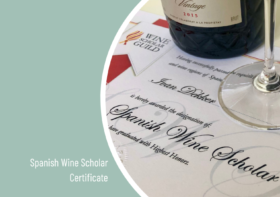Why a wine tastes the way it does

What to expect when choosing your bottle
Spain is home to many wine regions and a great variety of wines. From bold reds to crispy whites, sparkling, sweet and fortified, it’s all out there. But when you are in a restaurant looking at the wine list, it may not always be easy to quickly identify a wine of your taste. And even if you have a rough idea, you might think: how will this specific wine actually taste like? The sommelier (if there is one available) will be happy to help but in case you want to find out more for yourself: There are a number of variables that play a role and part of these variables are natural factors.
The local climate
One of the elements that can help you determine what you may expect in a wine is to know in which climatic zone the wine was made. In Spain, there are three main zones: the cooler north, the warmer Mediterranean east / south east and the continental center of the country. Cooler zones in general give lighter, fresh wines. For example, Albariño wines from Galicia. On the other hand, warmer zones give wines with a fuller body, for example wines from inland Spain. The main reason is that higher temperatures and lots of sunshine will give ripe grapes with more sugar, and as a result typically more alcohol.
The location
In addition to the climate, the location or region where the grape is grown is important. If the location is very close to the sea for example, there may be an effect on the average local temperature by cooling sea breezes leading to a fresher wine. Also, sometimes the sea damp might bring a saline effect to the wine. An example of a wine from grapes grown close to the sea is Txakoli in País Vasco in Green Spain. Further inland, the effect of cooling sea breezes may be less and if so, this typically results in wines with a bit more body and riper fruit. Mountains in Spain play an important role, too as they can protect vineyards from cooling winds and rain.
The grape
No surprise that another indication of the taste of a wine is the grape itself. Here we find a relation with the local climate: A specific grape typically gives its best in a specific climate. For example, Monastrell (in France named Mourvèdre) is a grape that loves a warm climate as it needs higher temperatures to get fully ripe. A Monastrell wine from the warmer southern Valencia region typically gives full bodied wines with ripe dark fruit. On the other hand, a Mencía based wine from the northwest of Spain typically will be a medium bodied wine in which you will find fresh red fruit.
These are some factors, but there are more that influence the taste and character of a wine. More in later blogs!
Cover photo: vineyard in Valdepeñas (Castilla-La Mancha)
Are you interested in how wines from different regions tastes? Join one of my wine tastings.
About Ivan Wines
Spain is home to many beautiful, but lesser-known quality wines. With Ivan Wines, I focus on discovering and promoting these wines, the makers and the regions. As a Dutch Registered Vinologist, I organise tastings and wine tours from Valencia. To subscribe to my newsletter, click the button on this page.


